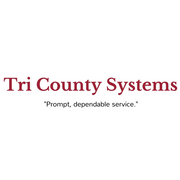
Your septic system directs wastewater away from your home. Each of its components, including the tank, inlet and outlet pipes, and drainfield, plays a vital role in separating and dispersing waste. When problems occur in one part, the entire system can be affected. The information below should help you avoid damage.
What Causes Septic Problems?
1. Soil Compaction
Your drainfield manages and treats the waste exiting the septic tank. The surrounding soil must have some air to disperse wastewater correctly. When it’s compacted, there are fewer paths for the liquid to travel through the soil for treatment.
If the pipes are compromised, the ground above them may feel soft and spongy to the touch. You might also see puddles over the drainfield. To prevent compaction, avoid parking vehicles or lawn equipment over the area.
2. Full Tank
 A septic tank can only handle so much wastewater. If it becomes full, waste will flow back into the house or flood the drainfield. When this happens, you may experience sewage backups and notice unpleasant odors, puddles, and particularly lush grass in the area around your drainfield.
A septic tank can only handle so much wastewater. If it becomes full, waste will flow back into the house or flood the drainfield. When this happens, you may experience sewage backups and notice unpleasant odors, puddles, and particularly lush grass in the area around your drainfield.
Minimize the chances of oversaturation by limiting water consumption, scheduling tank pumping every three to five years, fixing plumbing leaks promptly, and installing water-saving toilets.
3. Drainfield Cracks
Disturbing the drainfield in any way, such as landscaping over it or hitting it when digging, can crack or crush the pipes. Planting trees in the vicinity can also allow roots to infiltrate the drainfield, causing clogs.
To avoid issues, plant only shallow-rooted plants, like cherry trees, dogwood trees, and azalea shrubs in your yard. Planting at a safe distance will also prevent root intrusion. Use the mature height of a tree as a rule of thumb. If a species grows up to 30 feet high, plant it no closer than 30 feet from the drainfield.
If you experience any of the above issues, turn to the team at Tri County Systems in Rochester, NY. Serving Monroe County, they offer a variety of services to ensure septic longevity, including inspections, maintenance, and pumping. Visit their website to learn more about how they will help, or call (585) 467-2550 to schedule an appointment.
About the Business
Have a question? Ask the experts!
Send your question

